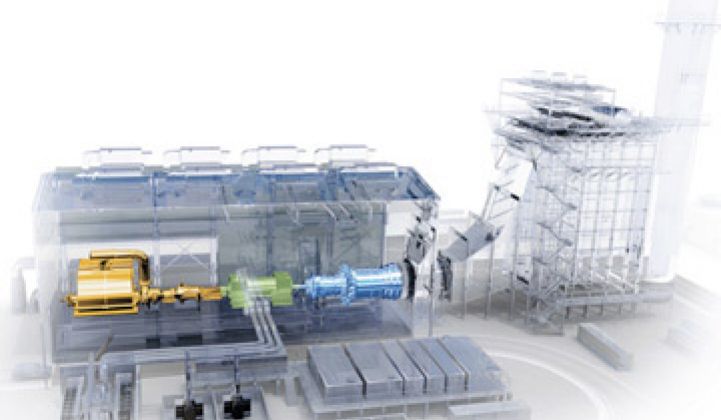The variability of solar power and wind power can play havoc with the grid.
In a political era where California and other states are mandating 20 percent or 33 percent or even 40 percent Renewable Portfolio Standards, the current system is not designed to deal with that level of variability, according to Jim Detmers, former COO of the California Independent Systems Operator (CAISO). "The system is not designed to accept that proportion of renewables."
Increasing penetration of renewables like wind and solar actually require an increase in the amount of natural gas-fired backup. And natural gas plants are at their least efficient when they are are ramped up and down. Natural gas, despite its recent good press for being cleaner than coal and of domestic origin, is still a fossil fuel that pollutes the air when combusted and the water when extracted via fracking. Estimates from the Energy Information Administration suggest that shale gas could make up 45 percent of all natural gas production in the U.S. by 2035 -- up from the current 14 percent.
Any improvement in the efficiency of natural gas-fired plants is going to help the transition to a more renewable-fueled future -- and reduce the amount of natural gas we might use.
General Electric just introduced their new 510-megawatt combined-cycle power plant that offers fuel efficiency greater than 61 percent -- the result of an investment of more than $500 million in R&D by GE.
GE drew from the company’s jet engine expertise to engineer a plant that will ramp up at a rate of more than 50 megawatts per minute.
Detmers' figures differ from that claim. "We can currently ramp generators at 63 megawatts per minute," but "early studies show that we need over 400 megawatts per minute to cope with a 33 percent RPS," according to Detmers. "We need new technology," he concludes.
The GE plant is engineered for flexible operation by integrating a next-generation 9FB Gas Turbine that operates at 50 Hz, a power frequency that is most used in countries around the world; a 109D-14 Steam Turbine, which runs on the waste heat produced by the gas turbine; GE’s W28 Generator; an integrated control system that links all of the technologies; and a heat recovery steam generator.
The International Energy Agency concluded in a report issued yesterday that large shares of variable renewable energy are feasible as long as power systems and markets are properly configured so they can get the best use of their flexible resources. More efficient and flexible natural gas plants are one of the requirements to get more renewables on the grid.
Detmers said that "Germany has some very serious conditions" with its 15,000 megawatts of wind and 17,000 megawatts of distributed solar. "We have a lot to understand about when we transform to a varying supply."



